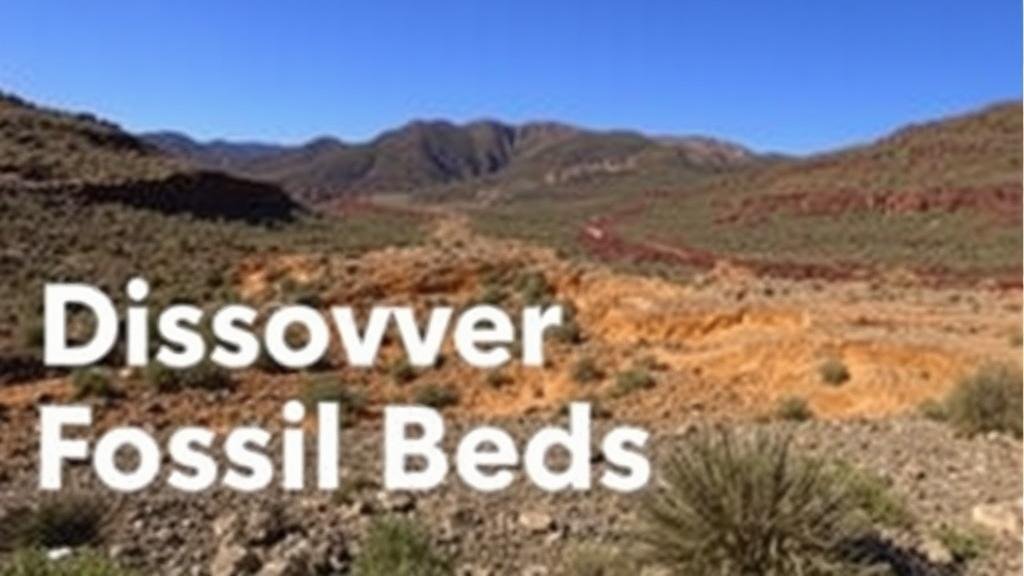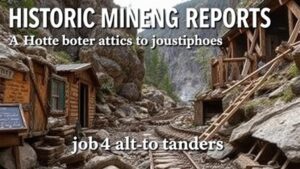Discovering Fossil Beds with Regional Geological Survey Data
Discovering Fossil Beds with Regional Geological Survey Data
The field of paleontology relies heavily on the availability of fossil beds as these sites provide a wealth of information regarding the history of life on Earth. Recent advancements in geological survey techniques have enhanced the ability to locate and identify potential fossil sites, leading to significant discoveries. This paper explores how the integration of regional geological survey data aids in the discovery of fossil beds, focusing on methods, case studies, and implications for future research.
The Importance of Geological Surveys
Geological surveys are systematic examinations of geological formations within a given area. e surveys provide data about the composition, structure, and age of geological materials. The information gathered can be crucial in identifying possible locations for fossil beds, as specific types of sedimentary rock are typically associated with such deposits.
- For example, sedimentary rocks such as shale, limestone, and sandstone are more likely to contain fossils than igneous or metamorphic rocks.
- Geological maps, which illustrate variations in rock types and ages, serve as invaluable tools for paleontologists seeking to explore fossil-rich areas.
Technological Advancements in Geological Surveys
Recent innovations in geological surveying techniques have revolutionized the way scientists identify fossil beds. Techniques such as remote sensing, ground-penetrating radar (GPR), and geospatial analysis play crucial roles in modern geological surveys.
- Remote Sensing: This involves the use of satellite imagery to identify geological formations and anomalies. For example, Landsat satellites have provided data that helped identify potential fossil beds in the Hell Creek Formation, which spans Montana, North Dakota, and South Dakota.
- Ground-Penetrating Radar (GPR): GPR utilizes radar pulses to image the subsurface, allowing researchers to detect structures associated with fossil beds without invasive excavation. A study in the Grand Canyon revealed sediment layers indicative of past life, thanks to GPR.
Case Studies Demonstrating Success
Several notable case studies highlight the effectiveness of integrating geological survey data into fossil bed discovery efforts.
- Hell Creek Formation, USA: Comprehensive geological surveys in the Hell Creek Formation have led to the discovery of numerous dinosaur fossils, including those of the Triceratops and Tyrannosaurus rex. Geological maps indicated layers of sediment that were conducive to fossil preservation.
- Jurasico de Teruel, Spain: In the early 2000s, geological surveys using both GPR and drone technology uncovered new sites with well-preserved dinosaur footprints, underscoring the importance of combining traditional geological methods with modern technology.
Statistical Correlations and Analysis
Quantitative analysis of geological survey data has provided insights into the distribution and richness of fossil beds. A study conducted across multiple North American sites revealed that specific lithologies correlated significantly with fossil abundance. For example, sedimentary rocks exhibiting high porosity and a history of marine transgression were found to host 75% more fossils than their less porous counterparts.
Implications for Future Research
The intersection of geological survey data and paleontological exploration offers promising avenues for future research. Enhanced understanding of sedimentology and stratigraphy is imperative for predicting fossil occurrences. By continuing to advance geological survey techniques, researchers can identify previously overlooked sedimentary environments that may yield new fossil discoveries.
- The integration of artificial intelligence with geological data could further streamline the process of locating fossil beds by predicting the likelihood of fossil presence based on historical data.
- Collaboration among geologists, paleontologists, and data scientists will be critical for maximizing the efficacy of geological surveys in fossil exploration.
Conclusion
To wrap up, the use of regional geological survey data is pivotal in the discovery of fossil beds. Advances in technology, coupled with robust geological mapping, significantly enhance the search for these irreplaceable windows into Earths biological history. By combining traditional geological techniques with modern innovations, paleontologists are poised to make significant discoveries that could reshape our understanding of evolutionary history.
For future investigations, it is essential to continue investing in technology and collaborative efforts to refine our approaches to fossil bed discovery, ensuring comprehensive understanding and conservation of these critical natural resources.



